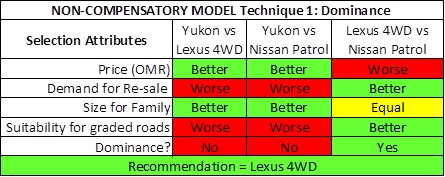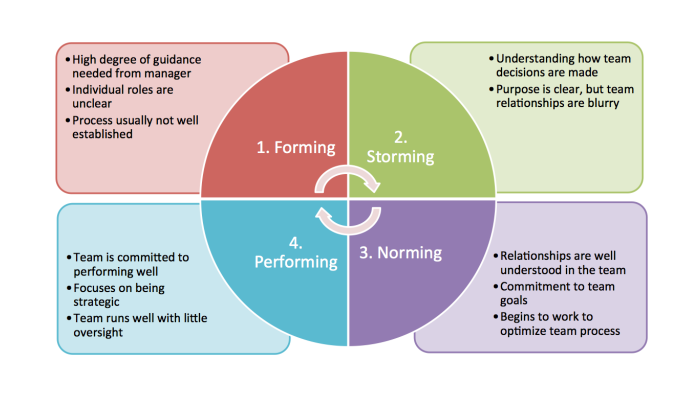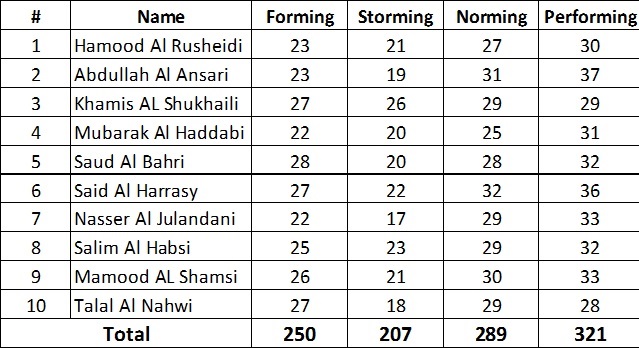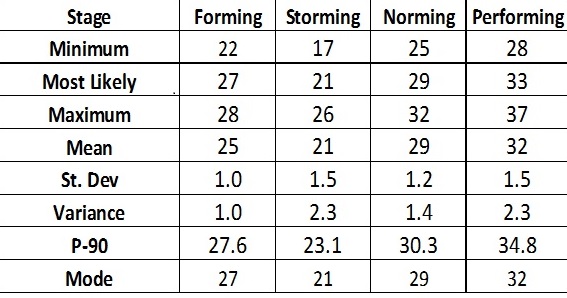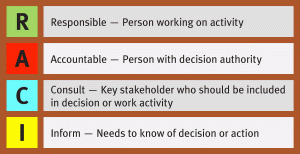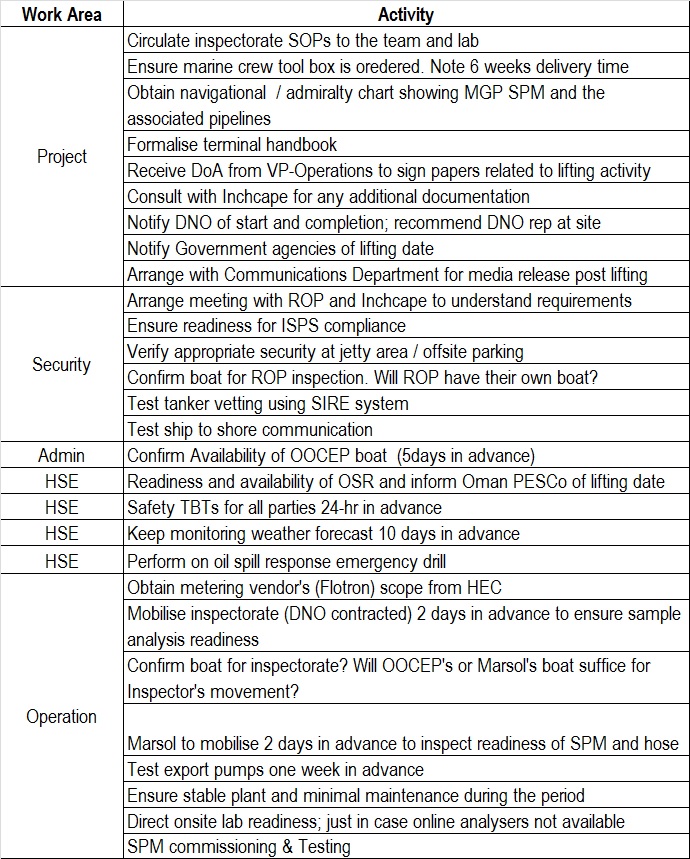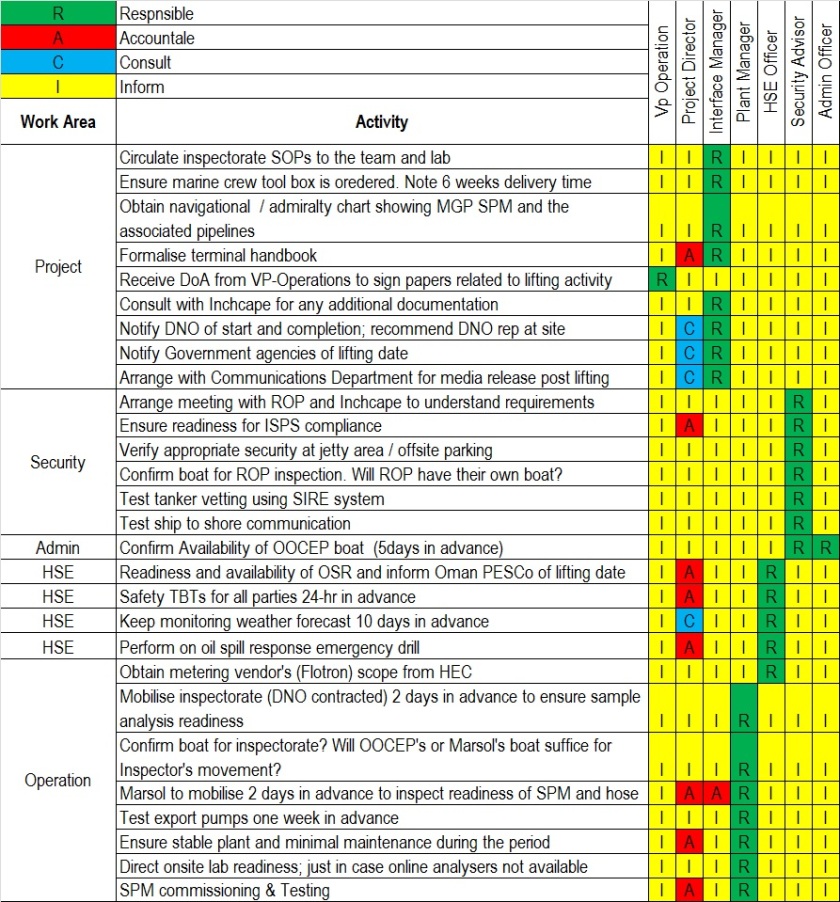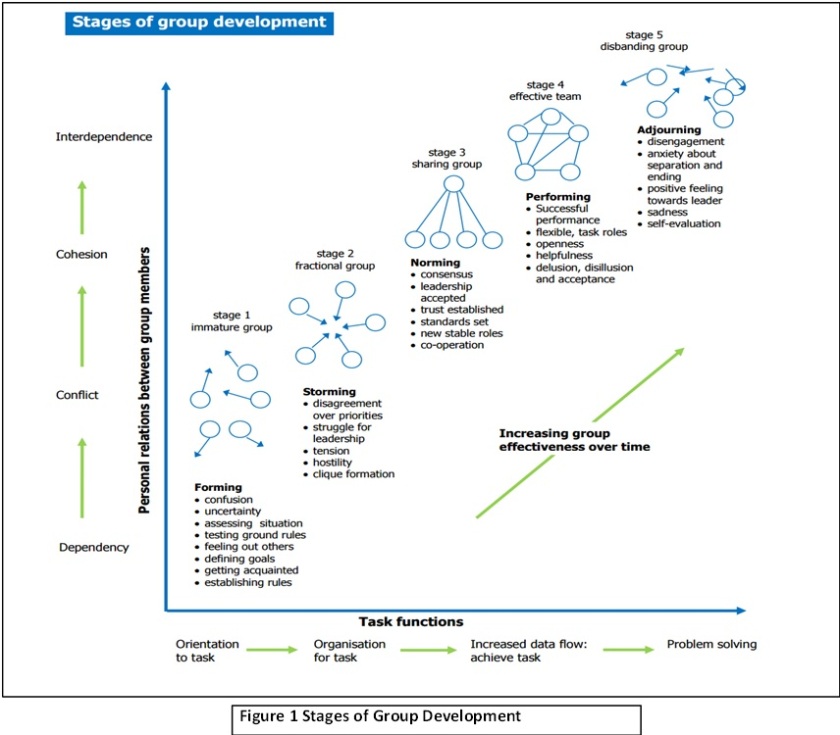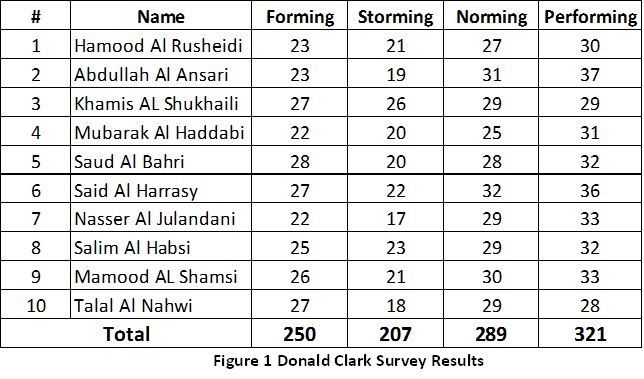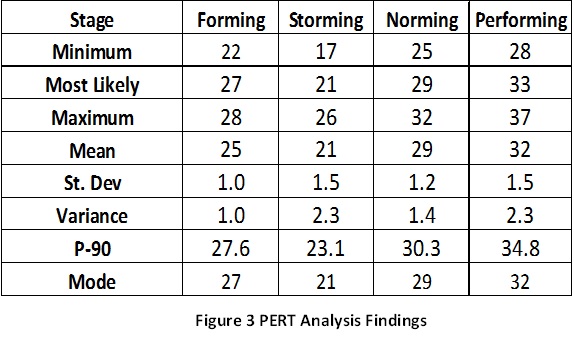1) Problem definition
In the previous blog (W3) I have used Grid Analysis technique to make a decision (buying a family car) from three possible choices. The analysis findings recommend going for Nissan Patrol.
I will use the same case study but using MULTI-ATTRIBUTE DECISION MAKING (MADM). The MADM is more useful with the subjective attributes rather than financial like my case study.
2) Feasible alternatives
After a comprehensive discussion with experts I have narrowed my selection to three choices: Yukon, Lexus 4WD and Nissan Patrol.
3) Developments of the outcomes of the alternative
There are four attributes that are governed the selection of each brand:
- Price,
- Re-Sale Price
- Size for family
- Suitability for graded roads
4) Selection of the criteria
The MADM has two main approaches and each one has different techniques:
- The non-compensatory approach
- The compensatory approach
1.1-The non-compensatory approach – Dominance:
Assume all attributes are equally important. From Figure-1 It is Lexus 4WD.
Figure 1 The Concept of Dominance
1.2-The non-compensatory approach – Satisfying:
We pick the minimum and maximum acceptable values and eliminate the rest. Per Figure-2 the choice is Nissan Patrol.
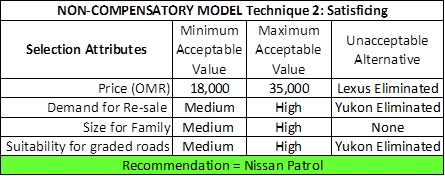
Figure 2 NON-COMPENSATORY MODEL Technique 2: Satisficing
1.3-The non-compensatory approach – Disjunctive Reasoning:
Conduct a Pair-Wise comparison and we give a score of 1 to the WINNING OPTION and a score of 0 to the losing option. From Figure 3 the “Price” is the most important attribute.
and a score of 0 to the losing option. From Figure 3 the “Price” is the most important attribute.

Figure 3 NON-COMPENSATORY MODEL Technique 3: Disjunctive Reasoning
1.4-The non-compensatory approach – Lexicography:
Rank the attributes per ordinal ranking from Disjunctive Reasoning and compare our options. Per Figure-4 the choice will be Yukon.

Figure 4 NON-COMPENSATORY MODEL Technique 4: Lexicography
5) Analysis and Comparison of the Alternative
Now we will use compensatory approach which has two methods.
A-COMPENSATORY MODEL-Dimensional Scaling Technique.
Consist of two steps:
- Turn the relative options into a “base 1” or dimensionless value (see figure-5)
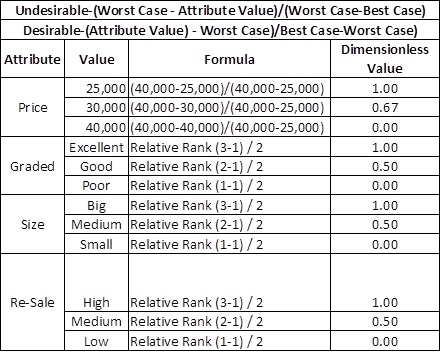
Figure 5 Turning each option into a Base 1 (dimensionless) scoring model
- Calculate the relative weighting of each attribute (figure-6):
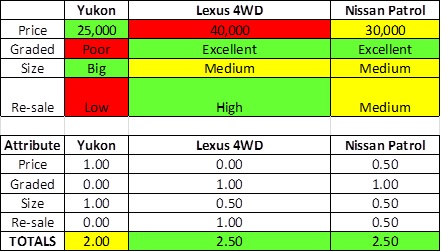
Figure 6 Relative Weighting
B-COMPENSATORY MODEL-Di Additive Weighting Technique.
Consist of 3 steps:
- Add up the total of relative ranking of all options which comes out to be 10
- Normalize the weighting of each attribute which gives 1.00
- Multiply normalized weighting by each option

Figure 7 Additive Weighting Technique
Figure-7 indicates the Nissan Patrol is the best choice.
6) Selection of the Preferred Alternative.
The above findings reveal that the final selection will depends mainly on your preference and most preferred attributes. Though I found the last techqnies is the best as it indicates how much better a choice compare to another is. Nissan Patrol is the final selection.
7) Performance Monitoring and the Post Evaluation of Result
I have bought the car and in 8 years’ time I will revisit this blog to compare the actual findings with the assumptions made above.
8) References
- Al Rusheidi, Hamood, (2016, Sept) (W3_Hamood Al Rusheidi_ New Car Selection” [Online retriever 6-9-2016 from https://wordpress.com/post/pmioocep16.wordpress.com/573
- Planning Planet, “GUILD OF PROJECT CONTROLS COMPENDIUM and REFERENCE (CaR)” [Online retriever 6-9-2016 from http://www.planningplanet.com/guild/gpccar/managing-change-the-owners-perspective


